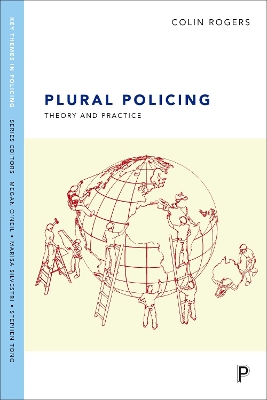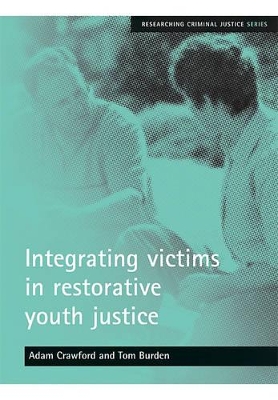Researching Criminal Justice
2 total works
Plural policing
by Adam Crawford, Stuart Lister, Sarah Blackburn, and Jon Burnett
Published 15 March 2005
This timely and important report draws together the findings of an extensive two-year study of developments in the provision of visible policing in England and Wales. Exploring the dynamic relations between different public and private providers, it combines an overview of national developments with a detailed analysis of six focused case studies, including two city centres, one out-of-town shopping centre, an industrial park and two residential areas.
The report considers the role of community support officers, neighbourhood wardens and private security guards, amongst other plural policing personnel and outlines the policy implications of the research findings, particularly with regard to the Government's current police reform agenda. It also provides important insights and recommendations regarding the organisation, co-ordination and regulation of the future mixed economy of visible security patrols.
Plural policing will be of special interest to academics, researchers, policy makers, police and security managers and students of criminology and policing, as well as all those interested in community safety and the changing face of modern policing.
The report considers the role of community support officers, neighbourhood wardens and private security guards, amongst other plural policing personnel and outlines the policy implications of the research findings, particularly with regard to the Government's current police reform agenda. It also provides important insights and recommendations regarding the organisation, co-ordination and regulation of the future mixed economy of visible security patrols.
Plural policing will be of special interest to academics, researchers, policy makers, police and security managers and students of criminology and policing, as well as all those interested in community safety and the changing face of modern policing.
Integrating victims in restorative youth justice
by Adam Crawford and Tom Burden
Published 16 November 2005
It is a key aim of current youth justice policy to introduce principles of restorative justice and involve victims in responses to crime. This is most evident in the referral order and youth offender panels established by the Youth Justice and Criminal Evidence Act 1999. However, the challenges involved in delivering a form of restorative youth justice that is sensitive to the needs of victims are considerable.
This report provides an illuminating evaluation of the manner in which one Youth Offending Service sought to integrate victims into the referral order process. The study affords in-depth insights into the experiences and views of victims and young people who attended youth offender panel meetings. It places these in the context of recent policy debates and principles of restorative justice.
The report tracks a 6 month cohort of cases in 2004; provides an analysis of in-depth interviews with victims, young offenders and their parents; highlights the challenges associated with integrating victims into restorative youth justice; offers recommendations with regard to the involvement of victims in referral orders.
This timely report will be of great value to youth justice policy-makers and practitioners, researchers and students of criminology and criminal justice, as well as all those interested in restorative interventions and the role of victims in the justice process.
This report provides an illuminating evaluation of the manner in which one Youth Offending Service sought to integrate victims into the referral order process. The study affords in-depth insights into the experiences and views of victims and young people who attended youth offender panel meetings. It places these in the context of recent policy debates and principles of restorative justice.
The report tracks a 6 month cohort of cases in 2004; provides an analysis of in-depth interviews with victims, young offenders and their parents; highlights the challenges associated with integrating victims into restorative youth justice; offers recommendations with regard to the involvement of victims in referral orders.
This timely report will be of great value to youth justice policy-makers and practitioners, researchers and students of criminology and criminal justice, as well as all those interested in restorative interventions and the role of victims in the justice process.

